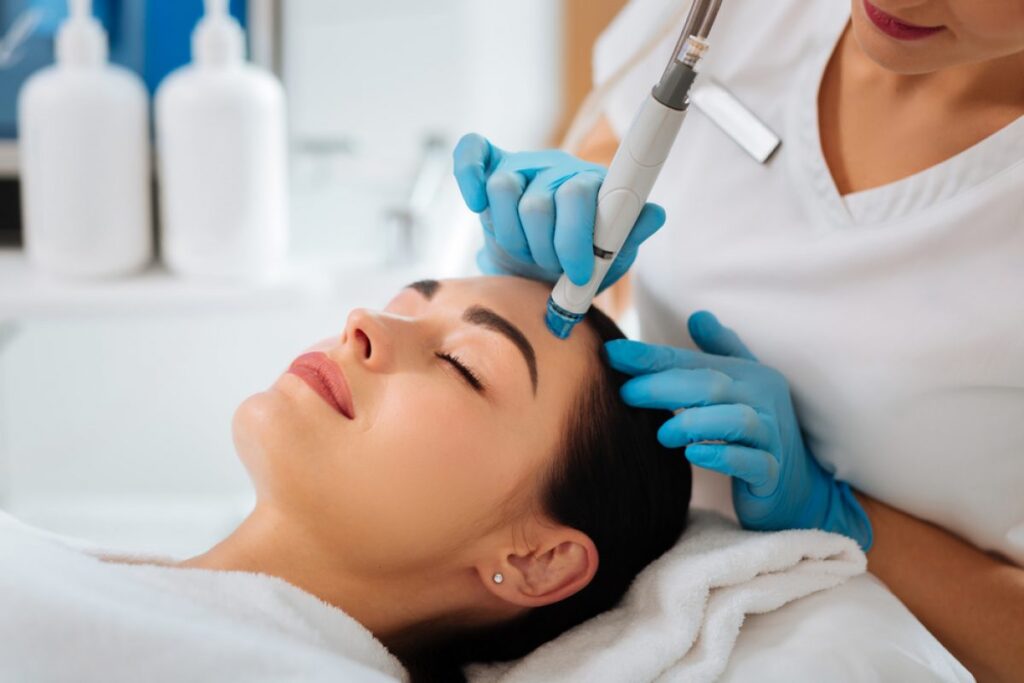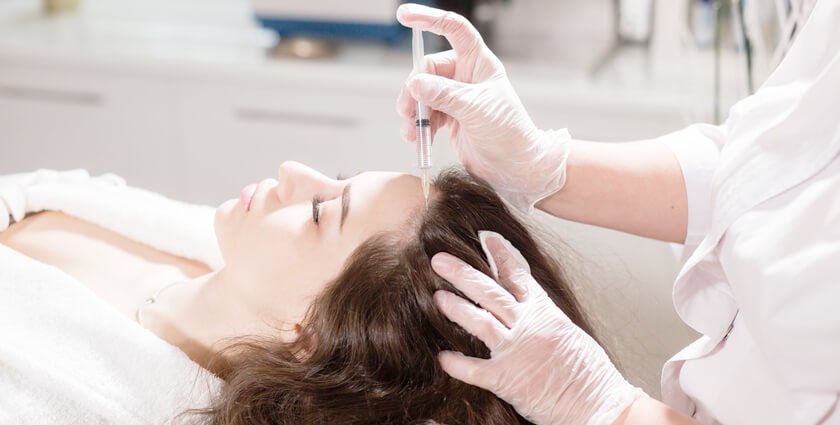Like most people, you probably think getting a hydrafacial is a pricey and unnecessary treatment. But is that the case? In this article, we’ll explore the benefits of a Hydrafacial and compare it to other facials. We’ll also provide you with a guide on how often should you do hydrafacial so that you can make an informed decision. Let’s get started!
What is hydrafacial?
Hydrafacial treatments are becoming more popular daily as people realize their many benefits. Hydrafacial treatments are a type of facial that uses high-frequency water jets to remove skin cells and debris from deep within the pores. This procedure is often used to treat acne, wrinkles, age spots, and other signs of aging.
There are a variety of factors you should consider before scheduling your hydrafacial treatment:
- Your skin type. Some people may be better suited for hydra facials, while others will experience greater results with traditional face treatments such as facials or peels.
- The condition you’re hoping to improve. Most hydrafacials are designed to improve the look and feel of your skin tone, texture, and hydration levels. However, some can also help reduce the appearance of fine lines or scars caused by acne breakouts or other blemishes.
- Your budget. Prices vary depending on the severity of your condition (acne requires more aggressive treatment than normal), location (some clinics offer discounted rates for clients who live nearby), and the number of sessions required (a single session may be all that’s needed).
So what should you do if you’re considering getting a hydrafacial? It’s important to consult with an experienced professional who can assess your individual needs and recommend the best course of action for achieving desired outcomes.
The benefits of Hydrafacial
Hydrafacial is a facial treatment that uses high-frequency pulsed water to remove the top layers of skin. This procedure helps improve the appearance of wrinkles, sun damage, age spots, and other blemishes on the face. Hydrafacial is considered safe and effective by many experts, as it has been shown to help reduce signs of aging.
One main benefit of Hydrafacial is that it can help reduce the appearance of fine lines and wrinkles around the eyes and mouth. The treatment also stimulates collagen production in these areas, which may help reduce or eliminate future wrinkle formation.
Another advantage of Hydrafacial is that it allows you to see your results sooner than traditional facial treatments. After just one session, you will notice an improvement in skin texture and thickness. In addition, repeated sessions over time may result in long-term gains for your overall complexion.
Hydrafacial vs. microdermabrasion: The difference explained
Hydrafacial and microdermabrasion are two popular skin-care treatments that offer similar benefits. Both treatments work to remove the outer layer of skin, called the epidermis, which can improve the appearance of skin by removing dirt, oil, and makeup from the surface. But there is a key difference between them that you should know about before deciding which one to choose.
Microdermabrasion is also known as “cosmetic dermatology,” “cryotherapy,” or “medical grade frosting .”It uses tiny crystals or sandpaper to rub away dead tissue and wrinkles on the face. This treatment is often used in combination with other cosmetic procedures, such as laser therapy or Peel32® hydropeptide injections (which stimulate collagen production). Because it removes so much surface area at once, microdermabrasion is considered more effective than Hydrafacial for treating deep wrinkles and scars.
Hydrafacial employs a particular device called an ultrasonic blade that gently slits open the topmost layer of the skin without damaging underlying tissues. This gentle action causes the rapid shedding of superficial skin cells while leaving deeper layers untouched. As a result, Hydrafacials are less likely to cause redness or irritation compared to other types of facial surgery; they are also generally less expensive than microdermabrasion treatments.
How often should I get a Hydrafacial?
So, how often to do Hydrafacial? Hydrafacial treatments are a treatment option that is becoming more and more prevalent. They are designed to improve the appearance of the skin by removing waste products, dead cells, and oils from the skin’s surface. This can help reduce the appearance of wrinkles, age spots, and other signs of aging.
The frequency of Hydrafacials depends on several factors – age, skin type, and lifestyle habits. Usually, an individual should get a Hydrafacial every four to six weeks to see significant improvements in their overall appearance.
How much does Hydrafacial cost?
Hydrafacial treatments vary in price, depending on the service and location. Prices start at around $150 per treatment but can go as high as $300. The factors that affect the price of a Hydrafacial include:
- The type of skin being treated (sensitive, mature, or mixed)
- The amount and complexity of wrinkles
- The experience and qualifications of the practitioner performing the treatment
How long does a HydraFacial last?
Hydrafacial is a unique treatment that uses pressure and cold to target aging skin. After the procedure, you may experience some mild discomfort and redness. On the other hand, most people report positive results after their HydraFacial. The average patient reports seeing improvements in wrinkles, elasticity, brightness, and overall complexion within four to six weeks. As with any new treatment plan or technique, there are always potential side effects that should be addressed by your doctor as soon as possible. But overall, most patients say that their HydraFacial was beneficial and well worth the investment.
A HydraFacial procedure generally lasts between 30 and 60 minutes, but effects may vary depending on the individual’s skin type and condition. Results typically last about 4-6 weeks, although they can gradually fade. If you have any questions or concerns after your treatment, please do not hesitate to reach out to your doctor or aesthetician. Get in touch with them immediately if you experience discomfort, redness, swelling, pain, or infection during the treatment period. HydraFacial results may fade gradually after that time frame has passed; however, if there are any concerning changes in your skin texture or color, it is always worth going back for a consultation.


